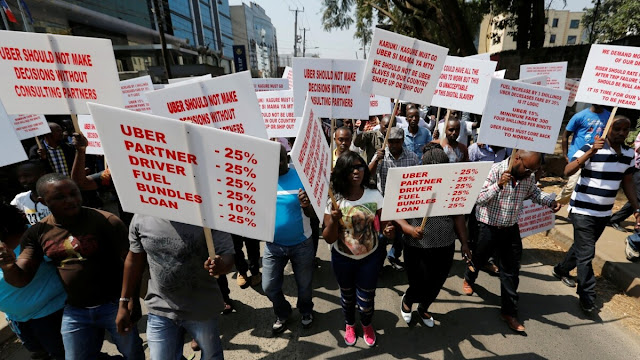Good intentions, unintended consequences
While urban areas are essential battlegrounds in the fight against climate change, they also serve as complex ecosystems where well-intentioned mitigation and adaptation efforts can inadvertently sow the seeds of new vulnerabilities, including the loss of livelihoods. The interplay between the urgency of climate action and the imperative of inclusion is particularly pronounced in urban mitigation and adaptation strategies. The Intergovernmental Panel on Climate Change (IPCC) emphasizes that effective action must embrace diverse societal values, particularly in urban settings where vulnerabilities are more pronounced.
The 'common but differentiated responsibilities' principle asserts that historical contributors bear a moral obligation to assist those disproportionately affected, especially within urban areas. Initiatives like the Green Climate Fund exemplify this, channeling resources to support climate adaptation and mitigation in developing urban centres. Inclusive climate action therefore seeks to rectify historical injustices in urban settings whereby indigenous communities, excluded from decision-making, become frontline defenders of environmental justice within urban landscapes.
In urban areas, pivotal contributors to climate change demand effective mitigation strategies that must be carefully balanced to avoid new vulnerabilities, including the loss of livelihoods. Urban green projects enhancing environmental quality may inadvertently contribute to gentrification, leading to increased property values and displacing lower-income residents. Dubbed the ‘green space paradox’, when new green spaces are constructed in neighbourhoods, those who have otherwise been deprived of such amenities historically, are also at the highest risk of displacement. Prominent green park development initiatives, such as the BeltLine in Atlanta, the High Line in Manhattan, and the 606 in Chicago, have provided crucial insights into the potential gentrifying effects of green spaces.
The shift to renewable energy is crucial for climate change mitigation but may result in job losses in traditional fossil-fuel industries. While new green jobs are created in the implementation of the global call to shift to renewable energy, job losses have been observed in fossil-fuel-related job groups such as in extraction. The most affected tend to be the lower-income labour workers who are also faced with other social conditions and limited skills thus increasing their vulnerability. Inclusive policies supporting affected groups become paramount in such transitions. Mitigation efforts must grapple with the interconnectedness of climate action and social justice, particularly considering the potential negative consequences on vulnerable populations.
Critical urban flood management may unintentionally displace informal settlements, highlighting the complex challenges in balancing climate action with the need for inclusion. Jakarta, Indonesia, serves as an example where flood control measures coupled with coordination challenges in the Ciliwung River Basin contribute to the displacement of vulnerable communities, exacerbating social inequalities. According to the Jakarta Legal Aid Institute, 48 out of 113 evictions conducted in 2015 were associated with flood mitigation measures. Several displaced households were relocated to rental flats (rusunawa) that were deemed costly, of low quality, or unsuitable for sustaining the businesses that people previously operated from their homes. Some individuals did not get any form of recompense. The detrimental effects of river normalisation on Jakarta's most susceptible communities illustrate how adaptation initiatives can render people more vulnerable.
Changes in urban transportation policies, such as promoting cycling or pedestrian zones, can impact livelihoods dependent on vehicular traffic, emphasizing the need for inclusive urban planning. Bogotá, Colombia, illustrates conflicts between sustainable urban transportation planning and the exclusion of informal workers. The Transmilenio Bus Rapid Transit (BRT) system and the TransMiCable aerial cable car, which was recently unveiled to link the BRT network to one of the city's poorest neighbourhoods, are some of the city's most iconic public transportation systems. The city, known for its innovative urban transit initiatives in Latin America, also has high informal employment and an inequitable and exclusive social mix. Poor people must travel long distances to find work in rapidly urbanising peripheries with informal housing and transportation, which increases their transportation costs. Given these circumstances, Bogotá is a perfect case study to highlight the triumphs, failures, and difficulties of employment access for the urban poor and transport mitigation efforts.
One critical challenge arising from climate change initiatives is the phenomenon known as 'green grabbing,' encapsulating the encroachment on indigenous land and the eviction of indigenous communities under the guise of climate action. The Amazon rainforest serves as a stark example, where large-scale deforestation projects disrupt ecosystems and infringe upon the rights and livelihoods of indigenous peoples. Initiatives such as the C40 Cities Climate Leadership Group unite major cities for collaborative solutions. However, challenges continue to arise in implementing strategies that are both effective and socially just.
On the flip side, there are consequences to climate inaction. The intricate web of life on Earth is in jeopardy due to biodiversity loss resulting from climate inaction, with a direct impact on essential ecosystem services. Human health is directly threatened by climate inaction, heightening the risks of heat-related illnesses, vector-borne diseases, and disruptions to food and water supplies, especially in urban settings. The global food system faces a direct threat, with climate change disrupting crop yields and necessitating transformative action for resilience, particularly in urban agriculture.
Inaction poses a direct threat to global security, compounding challenges faced by vulnerable populations, particularly in urban areas, and risking increased displacement and migration. In the energy sector where transformative changes are imperative to achieve carbon neutrality, inaction could result in economic downturns. Fast-forwarding to 2030 reveals a daunting reality where approximately 700 million individuals will face hunger, over 500 million grapple with extreme poverty, and a staggering 600 million lack access to basic electricity. These challenges underscore the urgency for inclusive climate action in urban areas as a lifeline for communities teetering on the edge.
